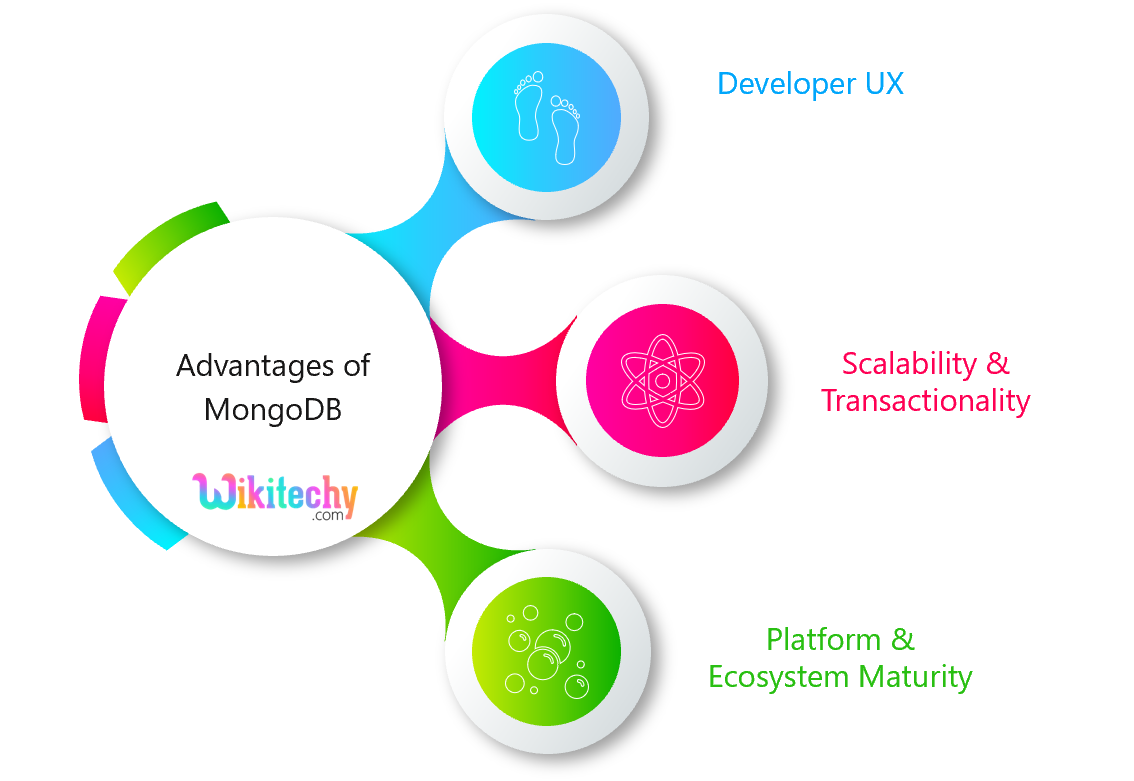Advantages of MongoDB :

Developer UX :
- It is created in such a way that ensures that the developers have an excellent experience while creating apps.
- Programming languages like JavaScript , Java , Go , C, C# , Python , PHP , Swift, Scala, Rust, and Ruby on Rails were MongoDB used.
- In Enterprise, IT new features are being added for supporting operations of MongoDB as an increasing number of businesses are opting for this database.
- For MongoDB customers, excellent tech support is also available.
- Assigning clusters straight away and you can start coding with just a couple of clicks in the web UI.
Scalability & Transactionality :
- In Scalability, you can develop apps that are capable of handling traffic spikes smoothly. It is one of the biggest advantages of MongoDB.
- Massive volumes of the read and write operations are supported, Due to the many innovations by MongoDB.
- Information clusters can be stored in one place, though the information itself is stored on numerous computer clusters, Due to the manner of Sharding in MongoDB.
- This is in stark contrast to the relational database architecture which scales up in order to create computers they are more powerful and speeder, therefore limited.
- In MongoDB objects can be embedded within one another during data modeling.
Platform & Ecosystem maturity :
- MongoDB was launched in 2007, and till now thousands of apps have been used for various purposes.
- Ergo is one of the best platforms that has been updated to ensure that emerging demands can be fulfilled.
- There is a huge, vibrant community of MongoDB developers around the world in the open-source arena, consulting firms, academia, system integrators and so on.
Disadvantages of MongoDB :

Joins not supported :
- In MongoDB joins like relational database doesn’t support.
- It is manually, can use joins functionality by adding by coding.
- It may affect performance and slow execution.
High memory usage :
- In MongoDB stores key names for each value pair.
- There is data redundancy, due to no functionality of joins.
- This results in increasing unnecessary usage of memory.
Limited Data Size :
- Document size should not have more than 16MB.
Limited Nesting:
- The nesting documents cannot perform for more than 100 levels.

